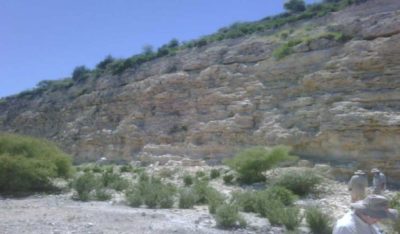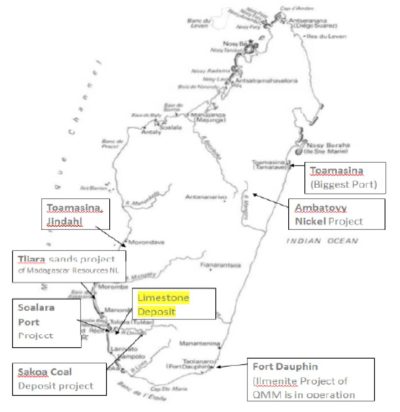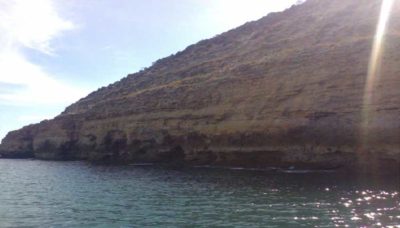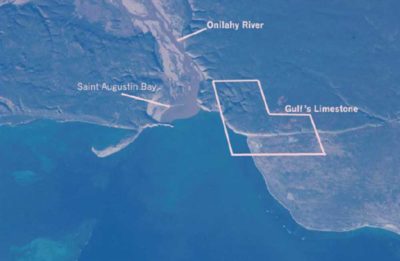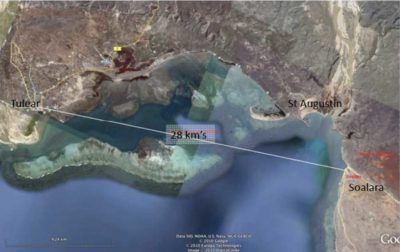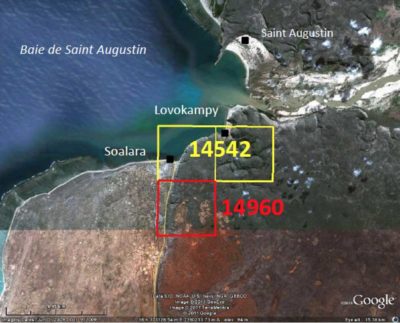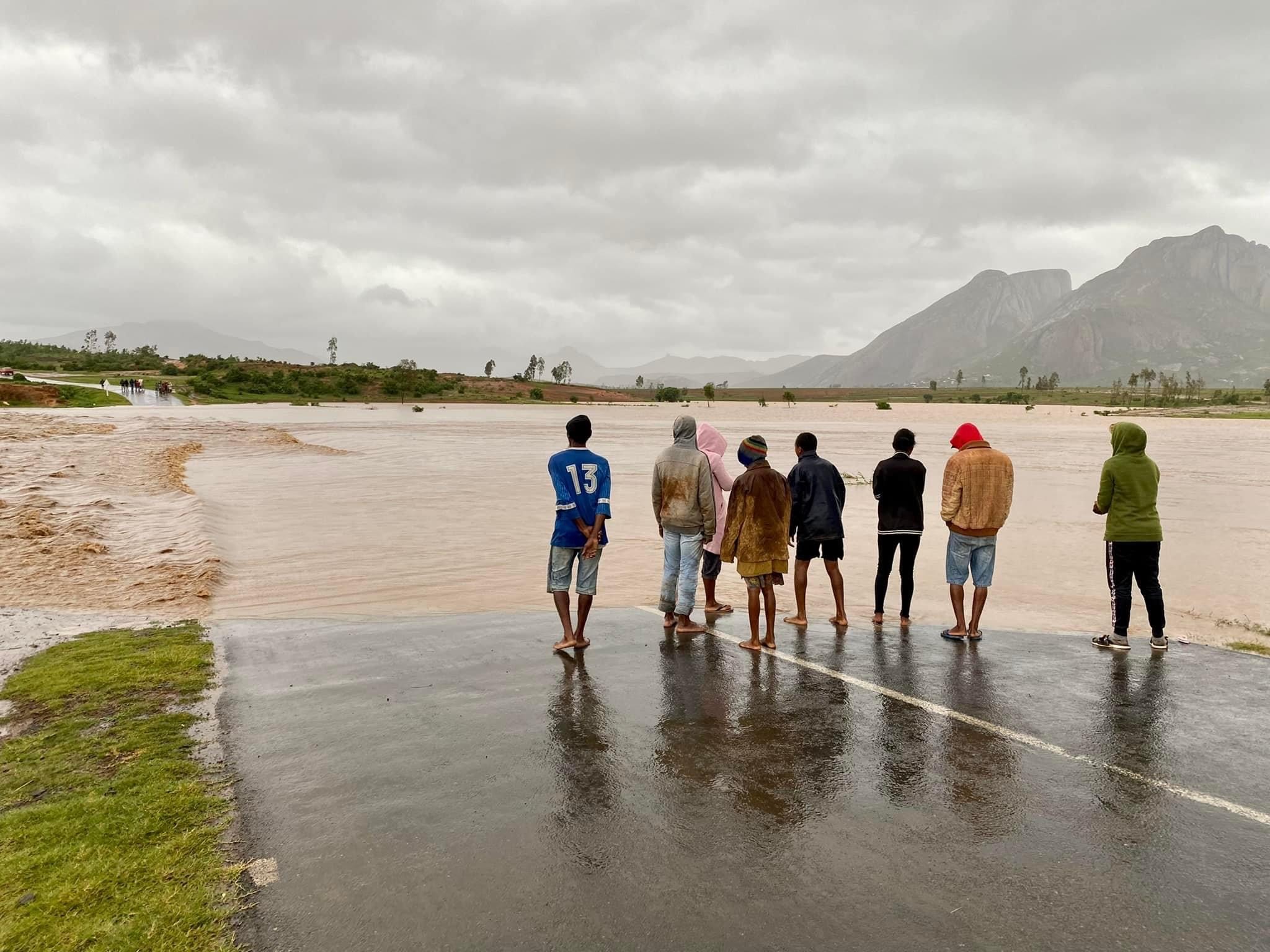Soalara Project
- The Madagascar Soalara Limestone Project is 100% owned by Cassius Mining Ltd, via its Malagasy registered company Soalara Calcaire SARL
- The Soalara limestone deposit is located immediately adjacent to the old Soalara Port in the south‐west of Madagascar, 28kms south of the Toliara port.
- The deposit is approachable by sea and by land from the Tuléar – Antananarivo national highway along a metalled road and of late via the St Augustin ferry introduced in May 2011.
- Location of this limestone resource makes it economically and strategically important for domestic and international supplies.
- The Soalara Project is located immediately south of St Augustin where the Onilahy River enters the Mozambique Channel.
- The Project consists of two contiguous Mining permits encompassing a total area of 18.75 kms
- The permits were granted to Soalara Calcaire SARL in 2015 for the exploitation (Mining) of limestone, valid for a period of 40 years to 2055
- A coastal location supports prospects for bulk exportation of Limestone aggregate and cut dimensional stone, being in close proximity to St. Augustin deep water bay and the port of Toliara, in addition to supplying Limestone aggregate for domestic industrial manufacture of cement, lime, steel and glass.
Limestone escarpment from Soalara village – looking NE
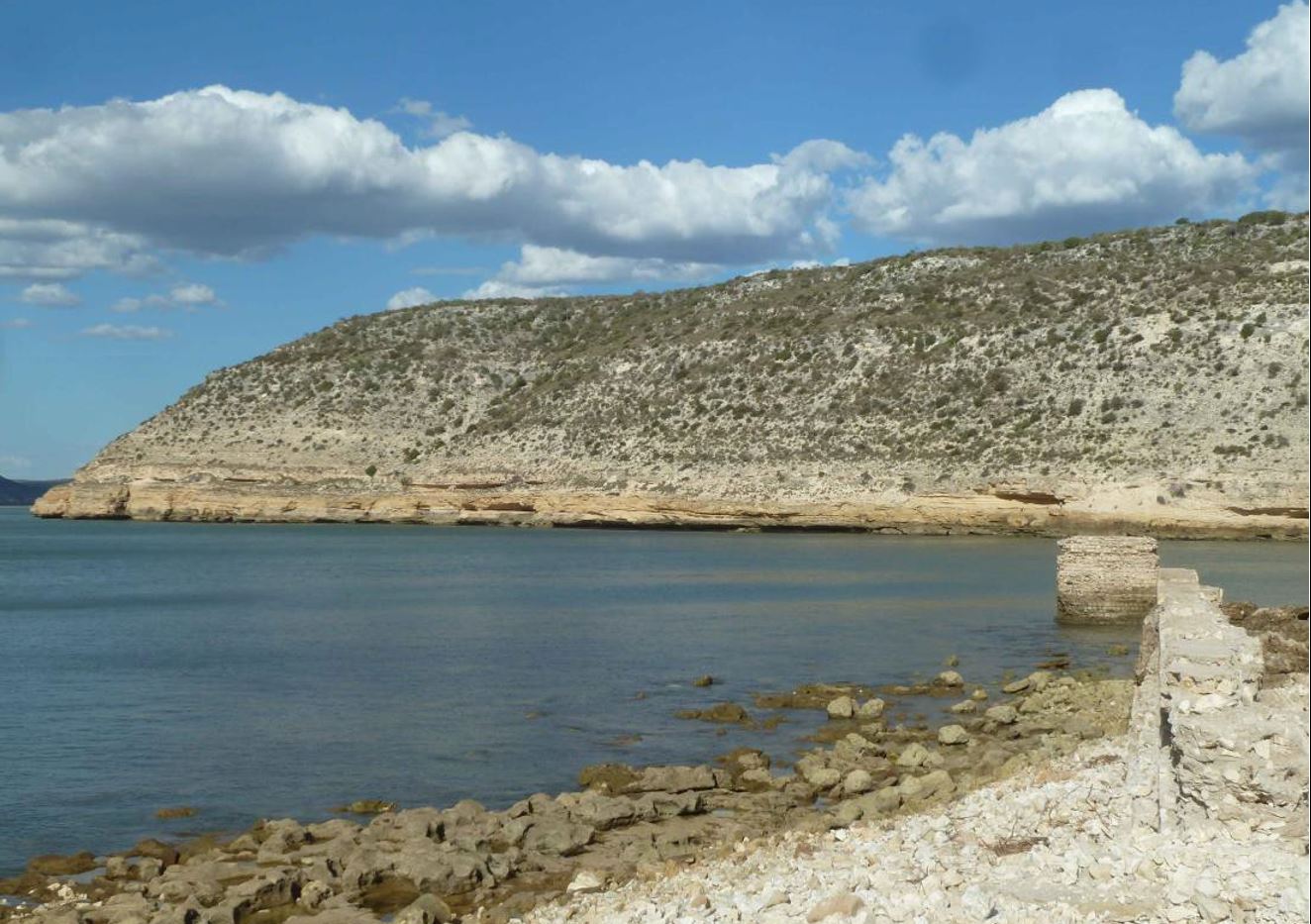
Project Details
REGION
Toliara, Madagascar
Operations
Exploration
Resource estimation drilling
Operations
GEOLOGY
The Soalara deposit includes a sequence of horizontally bedded Eocene limestones (~80m thick), overburden free, exposed in cliffs and forming an elevated plateau. The exposed limestone can be sub-divided into two parts. A lower, slightly more compositionally variable sequence (~40m thick) is conformably overlain by an upper, massive and compositionally uniform sequence (~40m thick).
The limestone plateau exists regionally along the coastal area, not only at Soalara. In some locations the limestone has shell bearing beds and interlayered basalt, though not at Soalara. The limestone is buff coloured tending towards white in places with fine sugary texture on the fresh surfaces.
At Soalara the deposit occurs as uniform horizontal beds of 0.5m to 3m thickness. The uniformity of the limestone deposit seems consistent with only minor structural disturbances. The top 13m show some weathering progressively diminishing from surface. Beyond this the deposit is in its fresh state.
SRK collected samples (see photo “Soalara Limestone Deposit & Sampling Points”) from 2016 along 4.2 km of the excellent cliff exposures in the west of the permits (and also on top of the Limestone plateau) throughout the vertical sequences for geochemical analysis.
SGS South Africa assayed the samples, identifying the lower limestone sequence to have an average 54.6% Calcium Oxide (CaO) and 0.4% Magnesium Oxide (MgO) content, corresponding to “high purity” limestone, with only minor 1.03% Silicon Dioxide (SiO2) and 0.21% Iron Oxide (Fe2O3) impurities.
The upper sequence appears to be even purer with an average 56.01% CaO and 0.21% MgO content, (“very high purity”), with further reduced 0.27% SiO2 and 0.07% Fe2O3 impurities.
An average 43.7% LOI was measured (Loss on Ignition – part of an elemental or oxide analysis of a mineral on heating, where volatiles lost are “combined water” (hydrates and hydroxy-compounds) and carbon dioxide from carbonates. It is reasonably uniform across all lower and upper sequences.”
Soalara Limestone Deposit & Sampling Points

Fresh Limestone exposure in Soalara escarpment face
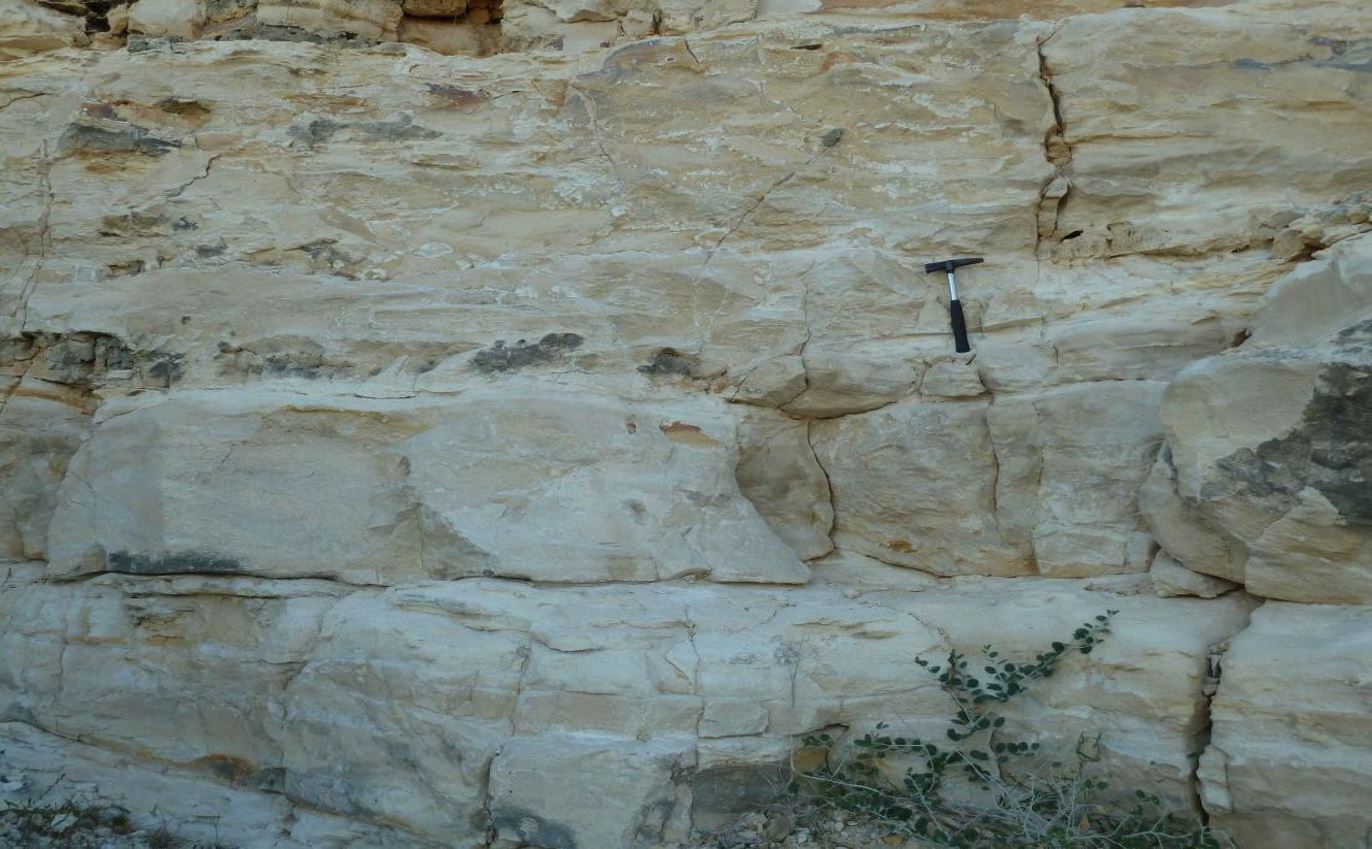
DRILLING PROGRAMME – UP TO 26 DIAMOND CORE HOLES (IN PHASES)
Data sets are planned to be taken from the drilling programme, including topographical data, collar co-ordinates, geological/geotech logging, core photography, density, and geochem assays.
Collar spacing is based on field observations that the limestone appears at surface to be consistent laterally across both permits.
The project currently has a JORC Exploration Target of 491 to 818 Mt of Limestone with a purity of high to very high (ASX: 19 May 2016) based on its Calcium Oxide (CaO) content. The drilling is targeting an upgrade to a JORC Resource.
The drilling programme is designed to quantify both the lateral and vertical continuity and purity of the Limestone sequence, together with evaluating its geological and geomorphological characteristics for suitability to potential future open pit mining.
4-5 holes have been selected from 9 candidates to be cored in Phase 1 (Feb 2022) (see yellow collars in photo “Soalara Permits, Drilling Grid & Access Tracks”. Drilling progress to each subsequent stage will depend on various factors, including prior results as an in-built quality, expenditure and efficiency control.
After acquiring datasets and core, all samples will be sent to SGS Perth, West Australia for assay.
Should the first phase be successful, and thereafter further phases remain positive at each stage, Cassius is targeting an overall objective of 26 holes over time.
Soalara Permits, Drilling Grid & Access Tracks
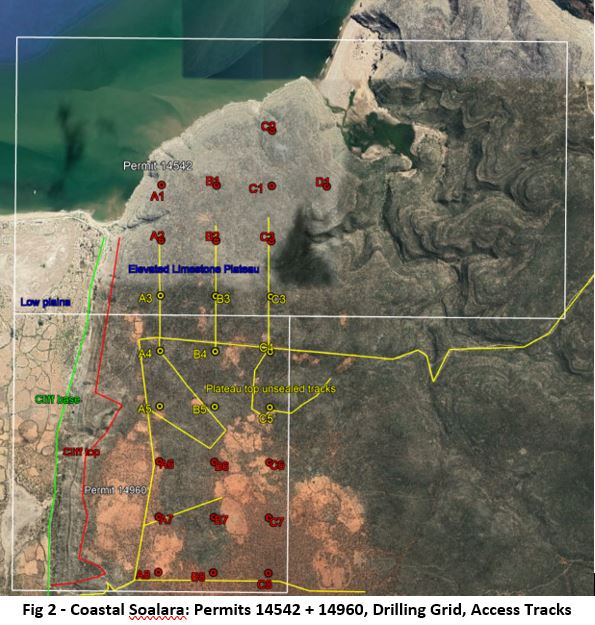
Vegetation and access track on Soalara Limestone plateau
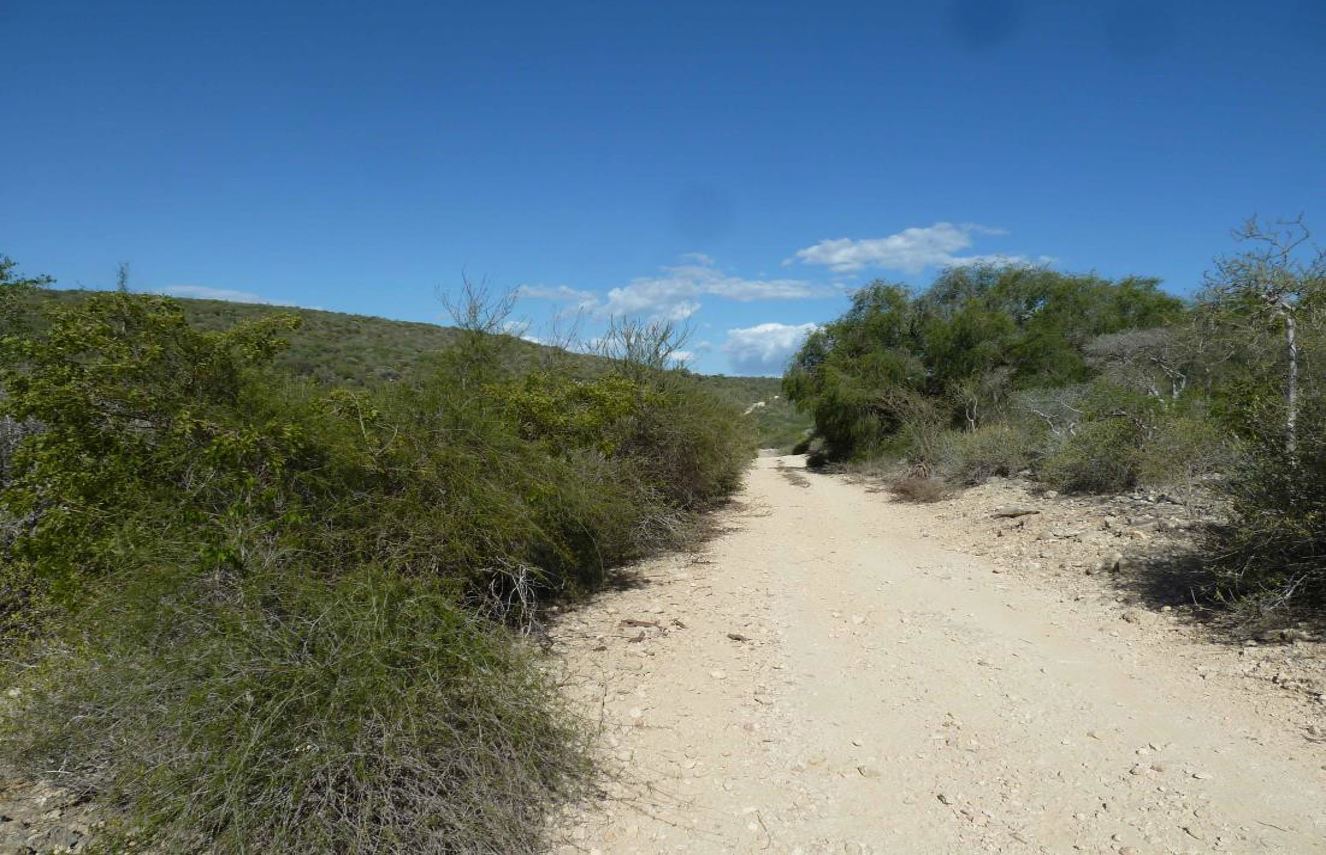
FOR MORE INFORMATION ON THIS PROJECT, GET IN TOUCH WITH…

James Arkoudis
CEO/Director
James has a background of nearly twenty years commercial experience as a solicitor. He has worked a range of practices as well as having been in-house counsel for one of the large property trust groups and a well-known finance company.
James also has wide experience in litigation matters and has acted for a number of corporate clients in this regard. James has also been a director of ASX Listed mining companies, as well as working closely on projects associated with ABSG Consulting.

